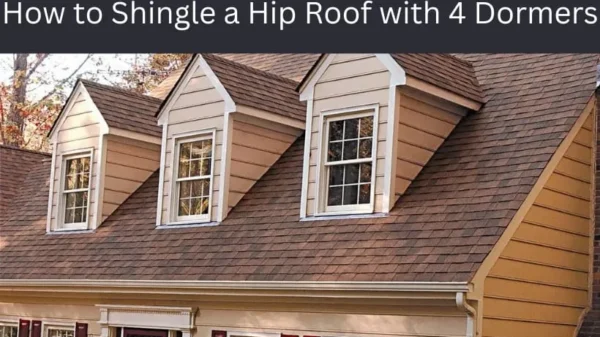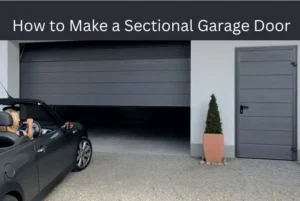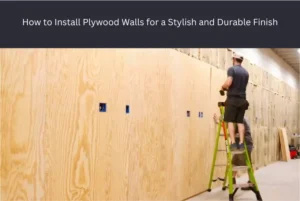A garage’s practicality, comfort, and energy efficiency can all be greatly increased by insulating it. Proper insulation can control temperatures, minimize noise, and save energy expenses, regardless of whether you use your garage as a workshop, storage area, or just a place to park your car. This tutorial will show you how to properly insulate a garage and turn it into a more useful area all year round.
Why Insulate Your Garage?
Temperature Control:
Insulation increases the usability of your garage by keeping it warmer in the winter and cooler in the summer.
Energy Efficiency:

If your garage is attached to your house, insulating it can lower energy loss and lower heating and cooling expenses.
Noise Reduction:
Additionally, insulation reduces outside noise and prevents sounds from the garage from reverberating throughout the house.
Protecting Stored Items:
Tools, equipment, and temperature-sensitive things kept in your garage can be shielded from excessive temperatures by insulation.
Types of Insulation for Garages
Fiberglass Batts:
Fiberglass batts are widely available and reasonably priced, and they work effectively between ceiling joists and wall studs. They have a good R-value (insulation efficacy) and are simple to install.
Rigid foam boards:
Rigid foam boards, which have a high insulation value per inch, can be used for garage doors, walls, and ceilings.
Spray Foam:
This kind of insulation produces an airtight seal and is very effective. It costs extra though and might need to be installed by a specialist.
Reflective Insulation:
Because they reflect heat away from the garage, reflective or radiant barriers are best suited for warmer areas. Garage doors frequently use them.
Materials and Tools Needed

Materials
- Insulation (Fiberglass batts, foam boards, or spray foam, depending on preference)
- Vapor barrier (if needed for your climate)
- Adhesive (spray adhesive for foam boards, if used)
- Caulk or expanding foam for air gaps
- Drywall or plywood (optional, for finishing walls)
Tools
- Measuring tape
- Utility knife or insulation cutter
- Staple gun (for fiberglass batts)
- Caulk gun
- Safety gear (gloves, mask, goggles)
- Ladder (for ceiling insulation)
Step 1: Prepare the Garage for Insulation
Clear the Space:
Clear the workspace and get rid of everything stacked against the walls.
Inspect for gaps and cracks:
Examine the walls, windows, doors, and garage doors for any holes, cracks, or air gaps. To stop air leaks, fill up these spaces with caulk or expanding foam.
Check for existing insulation:
Partial insulation may be present in certain garages. Take out any outdated or broken insulation if you’re updating.
Step 2: Insulate the Walls
Measure and Cut Insulation:
Each wall cavity between the studs should have its height and width measured. Make sure your insulation is cut to suit each part exactly.
Install fiberglass batts (if using fiberglass):
Gently press each batt into its designated spot in the stud cavity. Attach the foil or paper backing to the wall studs using a staple gun.
Install Foam Board (if using foam board):
Trim the foam boards so they slide between the wall studs securely. Each board should have its back covered with glue before being firmly pressed into position. For a more airtight barrier, use caulk or expanding foam to fill in any spaces between the boards.
Add a vapor barrier (if required):
A vapor barrier between the insulation and drywall on the warm side of the insulation helps keep moisture from building up in colder climates. If necessary, cover the insulation with stapled plastic sheets.
Step 3: Insulate the Ceiling
Measure and cut insulation for the ceiling:
Measure and cut your insulation for each ceiling cavity just like you would for the walls. Whether you have a completed ceiling or exposed ceiling joists affects the procedure.
Install Insulation Between Ceiling Joists:
Simply place the fiberglass batts between the joists. Cut each piece of foam board to size, then use spray glue if necessary to secure it.
Seal Gaps:
To stop air leaks, caulk or spray foam should be used to seal any openings around vents, light fixtures, and other ceiling penetrations.
Step 4: Insulate the Garage Door
Insulating the garage door is crucial if you want a more energy-efficient garage because it is a major source of heat input and loss.
Measure the garage door panels:
To calculate the amount of insulation required, measure each component of the garage door.
Cut Insulation to Fit:
Cut each piece of rigid foam board to fit inside the garage door’s recessed panels if you’re using it. Cut to fit the full panel area if reflective insulation is being used.
Attach Insulation:
For foam boards, adhere the insulation to the door panels using spray adhesive or double-sided tape. You might need to secure reflective insulation with tape or tiny clips.
Seal Around the Edges:
To further stop drafts, apply weatherstripping to the garage door’s edges.
Step 5: Insulate Around Windows and Doors
Use Weatherstripping:
To minimize air leakage, install weatherstripping around the garage door’s edges and any windows.
Add Caulk:
To seal any leftover openings where drafts could enter, caulk the frames of windows and doors.
Step 6: Finish the Walls (Optional)
You can use plywood or drywall to cover the insulated walls for a more polished appearance. Drywall can be painted to match the style of your garage and is perfect for a smoother, cleaner appearance. Conversely, plywood is more resilient and appropriate for locations where heavy objects or tools may be hung.
Cut drywall or plywood to size:

After measuring each wall piece, cut the plywood or drywall panels appropriately.
Attach to Wall Studs:
Use screws or nails to fasten plywood or drywall to the wall studs.
Finish and Paint (if using drywall):
For drywall, sand smooth, apply joint compound, tape the joints, and paint as you choose.
Additional Tips for Garage Insulation Success
-
- Check Local Building Codes: In some areas, there may be specific codes related to garage insulation. Check local requirements before starting the project.
- Handle Insulation Safely: Wear gloves, a mask, and goggles when handling insulation to protect against irritation from fiberglass.
- Maintain ventilation: Proper ventilation helps prevent moisture buildup in an insulated garage. Consider adding a vent or exhaust fan if the garage lacks airflow.
- Consider Heating: If you plan to spend time in the garage, adding a space heater or another heating source can make it more comfortable.
- Benefits of an Insulated Garage
- Enhanced Comfort: Insulation helps maintain a stable temperature, making the garage usable year-round.
- Lower Energy Bills: Insulating a garage attached to your home can reduce overall heating and cooling costs by preventing temperature loss.
- Better Soundproofing: Insulation acts as a sound barrier, which is ideal if you use the garage for projects, a workshop, or additional living space.
- Longer-Lasting Tools and Materials: Temperature control helps prevent rust, warping, or damage to tools, equipment, and stored materials.
Conclusion
A worthwhile job that enhances overall functionality, comfort, and energy economy is insulating your garage. You can improve your garage for all of your needs with a range of insulation options and easy-to-follow instructions. Every step helps to create a cozy and energy-efficient space, from sealing windows and doors to insulating the garage door, walls, and ceiling. Insulation will make your garage more useful and pleasurable all year long, regardless of whether you want to use it as a workshop, storage space, or even an addition to your living area.







